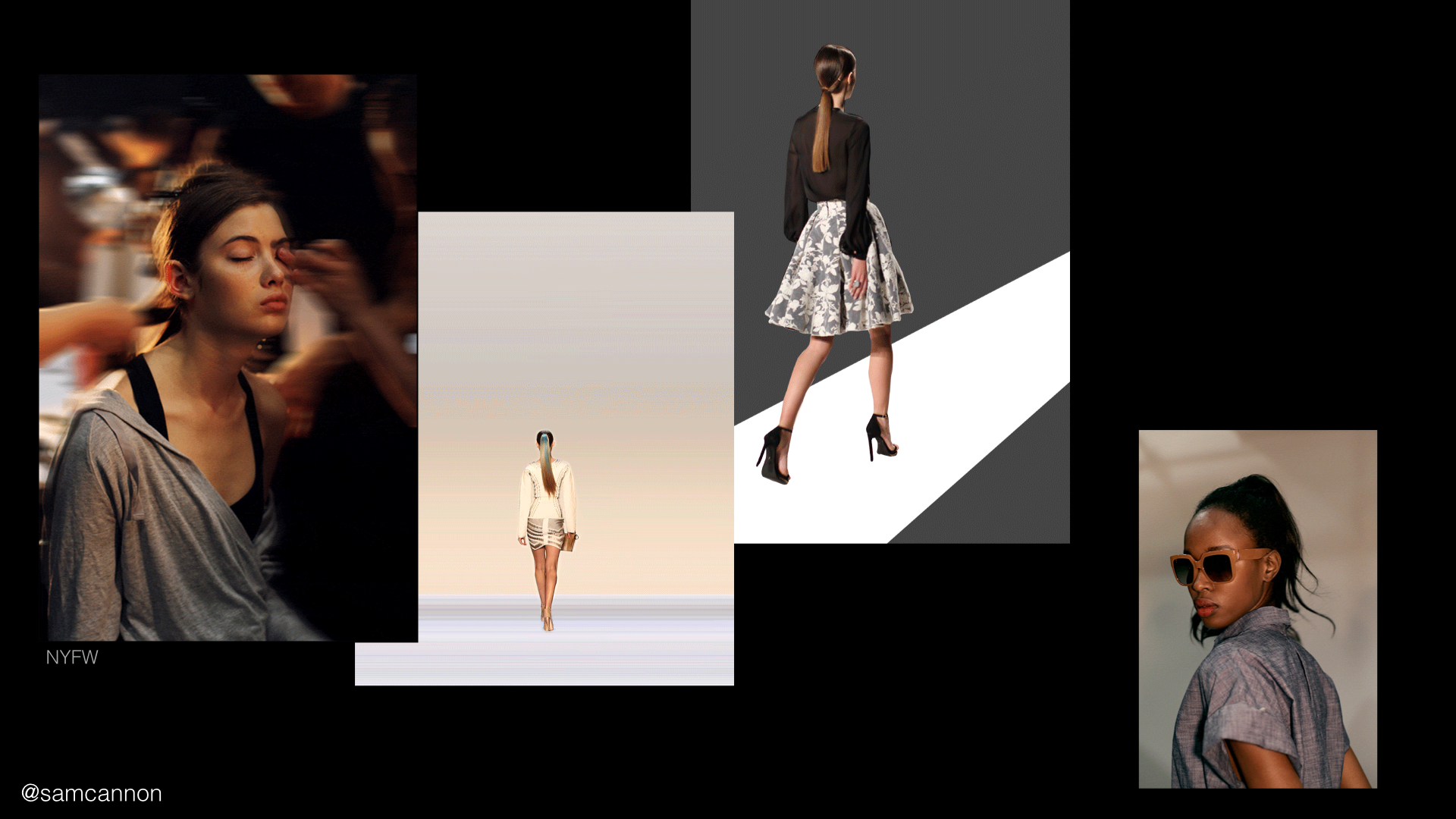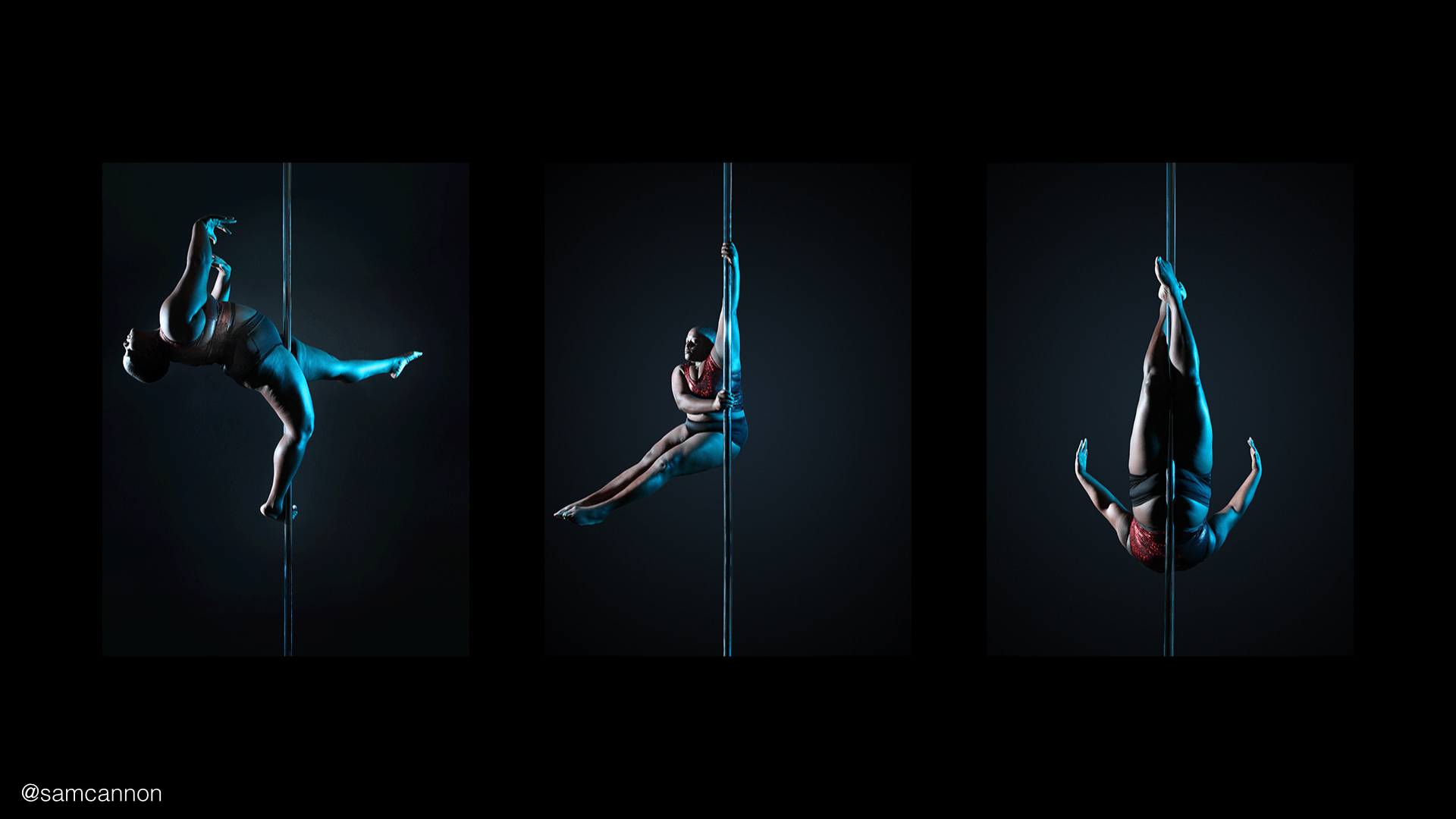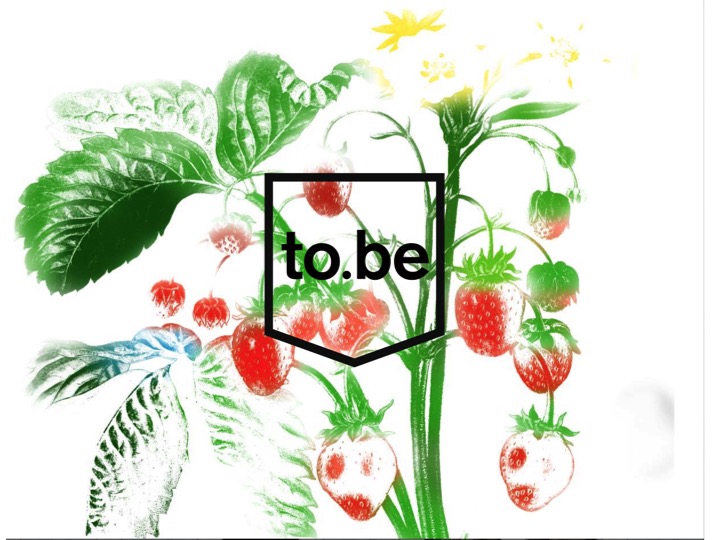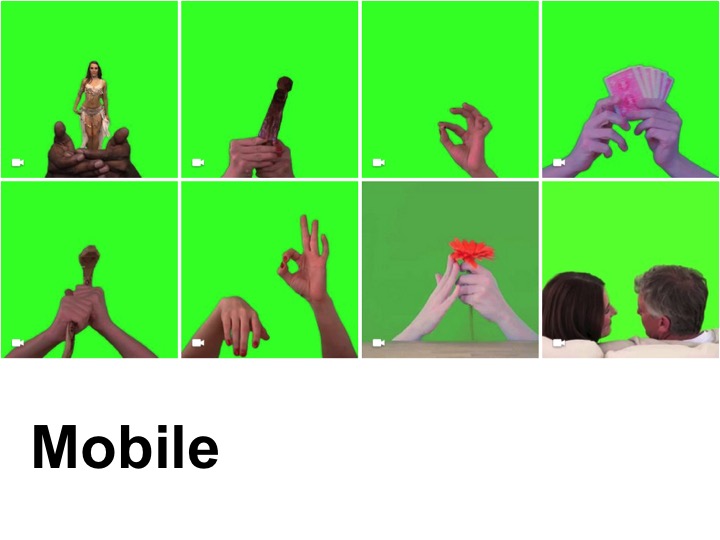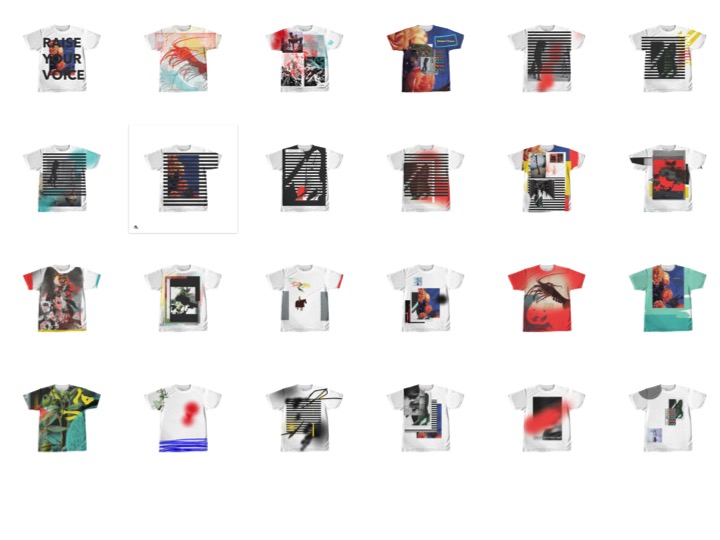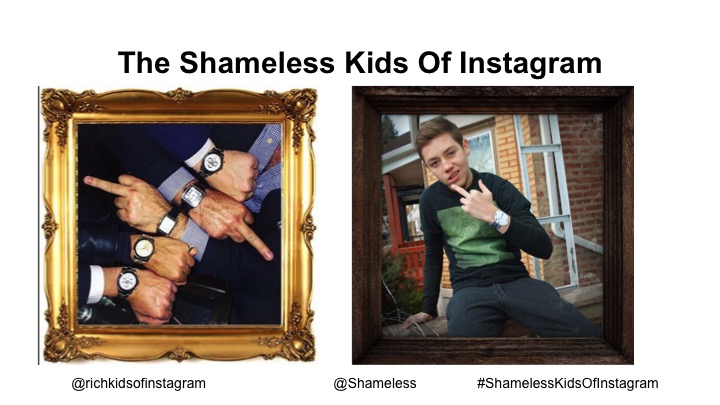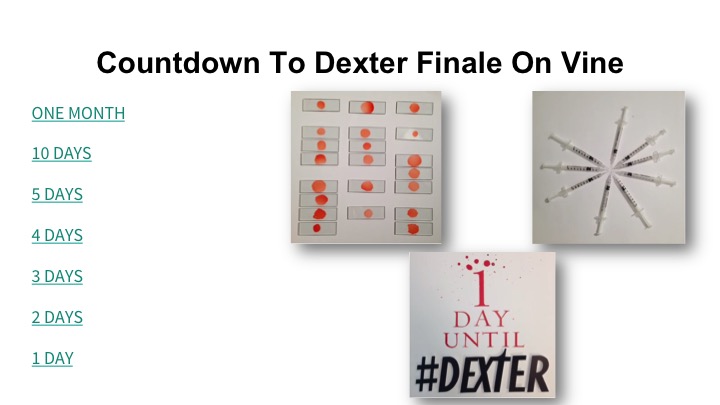The Art of Short Form Storytelling: Vine, Snapchat, To.be & Gifs | #ICPMeetup
The last of ICP’s Fall 2015 public programs, “The Art of Short Form Storytelling: Vine, Snapchat, To.be & Gifs,” presented on December 16, 2015 included presentations and a discussion with artist Sam Cannon, to.be cofounder Nick Dangerfield, and creatives Alphonzo Terrell and Erin Joyce.
I was excited about this particular talk. I’m a sucker for short-form—stories, animations, video, infinite looping—and finally, I thought, someone with authority in the matter would help me understand Snapchat.
The program consisted of presentations by the four participants, followed by a short discussion moderated by Fabrice Nadjari of Studio 55. First up was Sam Cannon, a recent graduate of the Rochester Institute of Technology, who presented animated GIFs—a varied selection of her own work and commissions for fashion and beauty clients. It’s Cannon’s inventiveness and the canny sense of humor she embeds in her loops that serve as the common thread between them.
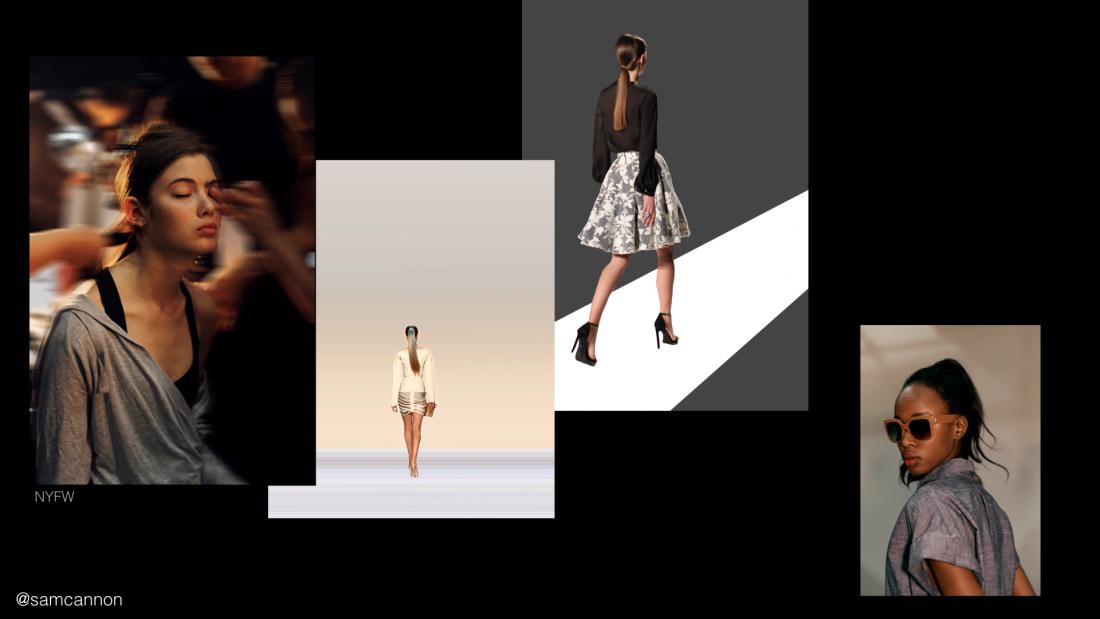
Cannon studied photography and video and found in GIFs a way to combine both passions. “I started getting really fascinated with the idea of short, infinite loops, and creating images that could live in this space between photography and video,” she said. The format presented another plus: not having to deal with sound. “It helped me feel like I was an image-maker, exclusively, and not someone who was dubbing into the world of video.”
A compelling piece consisted of a frame looking down a street between two buildings in Havana, Cuba. At the end of the block, schoolgirls walk by one behind the other. The editing was seamless and the repetitiveness, absorbing; the looping narrative and the historic setting and uniforms were reminiscent of Surrealist photography.
“This one image took hours and hours to edit, to try to get the perfect loop to come out of it, and to create that illusion of time in something that is really short but seemingly can just last forever,” Cannon said. “This is the first image that I shot that I felt like I’d really found something, that I was really, really happy with.”

In addition to covering fashion week twice and producing seductive micro-narratives from the frenzy on and off the catwalk, Cannon also takes on editorial commissions. In a recent one for Refinery 29, she photographed Roz the Diva, a pole dancing and fitness instructor with an active social-media Instagram following. While she was making the photos, she explained to Roz how she would animate them later. Roz excitedly exclaimed: “I’m finally going to be a GIF!’”
Cannon concluded her presentation with a new series of personal work, another nod to her sense of uncanny surrealism, also reminiscent of the work of the late Francesca Woodman. Her black-and-white moving images show people with eyes embedded in their cheeks and foreheads, or a line of nostrils radiating in an arc towards the woman’s ears. With this series, Cannon feels she getscloser to the format’s unique appeal. “When I’m making these images I get really obsessed with the idea that these forms, these figures, these subjects, are living, are moving, are taking on their own life.”

Extending the idea of infinite creative possibilities on the Internet, Nick Dangerfield presented to.be, an online platform of innovative tools he cofounded. Somewhat unclassifiable despite its distinct products, even Dangerfield had difficulties nailing down a strict definition for to.be: “We say it’s artistic work, for lack of any other purpose,” he ventured. Nodding to the playfulness of the platform he added, “our tools are generally quite useless for anything else, and very young community that uses them uses them in creative and expressive ways.”
But therein lies the magic of to.be. One of their tools, called Fields, is essentially a large tabula rasa that lives inside a browser. “It functions as a very gigantic canvas in which you can throw in any form of media: photography, video, gifs, music,… it’s essentially like a large mural,” Dangerfield explained. What separates it from a mural in the street, he said, is that it incorporates both still and moving images.

Dangerfield also presented one of to.be’s mobile apps, to.be Cam, which transforms the screen of a Smartphone into a performance space, providing both a background, and a foreground of two hands doing something (wearing boxing gloves, waving around a chef’s knife, etc.). This proscenium of sorts is built for the user to occupy the space in between. Sandwiched between the presets and bereft of any editing tools, the impromptu actor is tasked with acting in this micro-narrative, the results of which are difficult to exempt of their funniness.
While to.be’s tools don’t necessarily offer linear forms of storytelling, Dangerfield is inspired by photography and its inherent promise of a story. He spoke of one of his favorite image makers, the Japanese photographer Moriyama Daido. “I think he’s a specialist,” he said of Moriyama, because he offers “clues that something had happened before, and something will happen immediately after. But it is up to us to discern and decide what that story is.” He described this as the great talent of successful storytellers, to activate our imagination rather than just completing the picture. “Our tools never purport to give a sense of completeness, or of finished work, or of perfection.”

Another way to.be’s tools eschew a sense of perfection is by not providing any backtracking options, revealing more of the creator’s process. “You can guess the intention of the artist based on how materials were used, by the traces of mistakes, or how the mistakes were corrected,” Dangerfield explained. “There’s no undo, you have to cover your mistakes, when you layer things on top of others, you are destroying the layer underneath. It’s sort of storytelling by stratification.”
Showcasing the workplace applications of digital short-form narrative tools, Alphonzo Terrell and Erin Joyce then presented projects for which they have used Youtube, Vine, and Instagram, among other tools, to expand the narratives of popular TV shows, or to engage the “rabid fanbase” of popular series like Dexter and Homeland.
Their projects ranged from hi- to lo-fi: For Homeland they created a full-blown fictional media apparatus around the events in the show, including diagrams and charts of an explosion that took place in the show and even first-hand witness interviews. Given the show’s focus terrorism, the effect was chilling—perhaps a little too real for comfort. If anything, their project touched that delicate place where art and life overlap, exposing their illusional separation.
The same sort of poignant discomfort was put to use via Instagram for the show Shameless, which tells the stories of a group of poor young men and women on the south side of Chicago. They decided to co-opt the gilded golden frames and ridiculous postures of the popular hashtag #rkoi (rich kids of Instagram), extremely wealthy young adults broadcasting their wealth on private jets, planes, or by using iPads as plates—“things that are horrifying but kind of fascinating to watch,” according to Joyce. Their question became: “How can we create a dialogue and tell the Shameless story?” At once mocking the ludicrous conceit of the original hashtag and subverting it, the account depicts the show’s characters flaunting lowbrow accessories like fake watches or worn-down shoes, “for the ninety-nine percent.” Here, too, the effect expanded the show’s original story to highlight what has become an increasingly visible social concern, economic inequality.

For the countdown to the season finale of Dexter, a show about a likeable serial killer, Joyce, Ferrell, and their team created daily short Vine animations using paper cutouts, making light of the show’s goriness by invoking blood via red construction paper, and injecting a sense of humor and craftiness to the gory serial-killer theme. In their roles as creatives within a big production company, Joyce and Terrell stressed their need to think strategically about the ways they employ digital tools. “What’s interesting about the brand that we work with is understanding audience,” said Terrell. “We’re not fully allowed to express our deepest, darkest desires with our shows, we really have to think about our audience and where they’re at, and how they consume content, and what makes sense for them.” With a show like Dexter that has its own fan-fiction-producing viewers, the daily stream of countdown Vines—one among many other media initiatives products—made sense with its lo-fi approach and differed from their other transmedia products approaches by underscoring the series’ fictional aspect.
The conversation that followed focused on the appeal of such short-form narratives, both in relation to micro-narratives produced to complement complex network shows, and for the kinds of advertisers that hire Sam Cannon to produce a GIF of lipstick or blue jeans. Dangerfield feels it’s a reflection of people’s general obsession with any graphic content thrown at them, especially the kinds he referred to as “low-friction.” To him it seems clear why ad agencies use storytelling as tools to sell: because people respond to stories.

Another question focused on the issue of copyright, especially in the context of GIFs and the images and animations that users might include on to.be’s Fields. The youngest and arguably most digital-native on the panel, Cannon exclaimed, “Who cares!” Dangerfield acknowledged that it’s a tricky subject, and that on a few occasions he’s received emails asking him to take down copyrighted material. He referred back to the landmark Richard Prince copyright case that favored Prince by way of the argument of “artistic exception.” The judge, after a long process, sided with Prince on grounds that the work was transformative enough as to separate it from the origin and bring it into Richard Prince’s practice, “because that’s what he does: he uses other people’s images.” As it remains the most recent, high profile case on image copyright and artistic use, it’s set the precedent for defining fair use guidelines.
As an artist working with and for the Internet, Cannon feels that getting upset every time someone shares her GIFs without crediting her would be unrealistic. It’s this wide exposure that caught big brands’ attention. And those collaborations are advantageous, she said. “Especially as a GIF artists working for brands, they’re really willing to credit me on everything that I do,” she recognized. “Especially high-end brands like GAP or Stuart Weitzman, they have a really clear brand voice, you don’t really picture someone like that making GIFs or making Vines. So, for them, it might be easier to say, We’re not just making GIFs, we’re collaborating with this artist Sam Cannon to make these GIFs and that pushes it away from them.” It’s win-win: The brands keep their brands intact, and the artist gets credit on all their platforms, which in turn gives artists like Cannon more exposure.
To my chagrin, the speakers neglected to mention Snapchat until the very end, when prompted by a member of the audience (which at least provided some reassurance that I wasn’t the only one seeking elucidation). But their presentations and discussions allowed for an expanded understanding of the creative and narrative possibilities offered by simple formats like GIFs and Vine and how platforms like to.be are redefining the way artists can engage with the Internet—and expanding the opportunities for play, humor, and performance.
Paula Kupfer is a writer and editor based in New York. She works as photo editor for The California Sunday Magazine, and was previously the managing editor of Aperture magazine.
